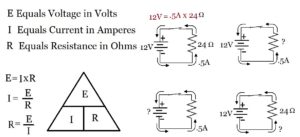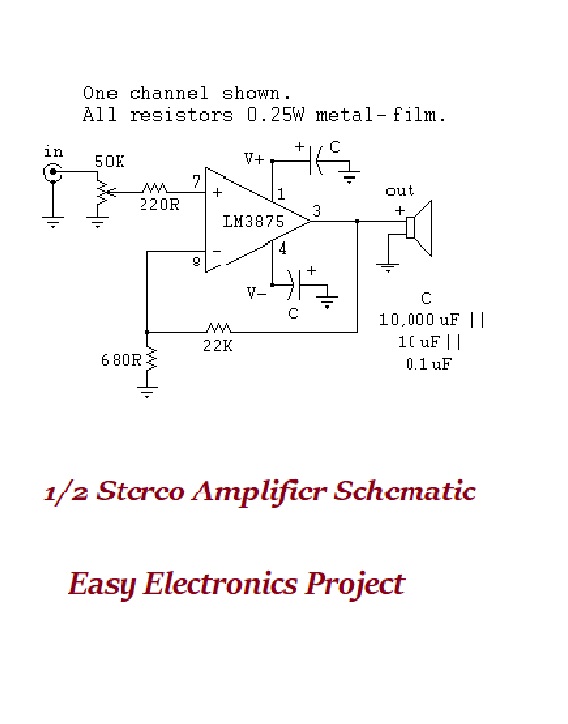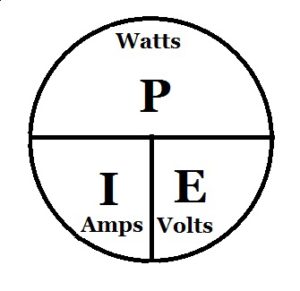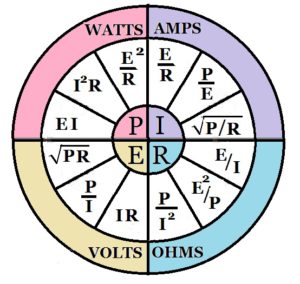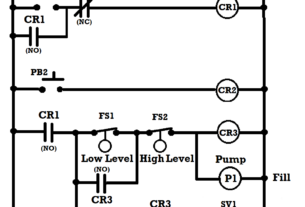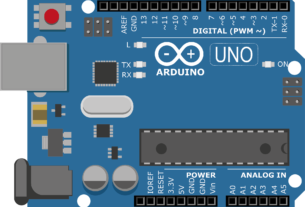Our goal in this post is to discuss Using Ohms law and the Power Formula. First, there are some terms that need defining. When a path is created for electrical current to flow a circuit is created. A Circuit Diagram (schematic) is shown below using schematic symbols.
Volt [ V ], Ampere [ A ] and Ohm [ Ω ]
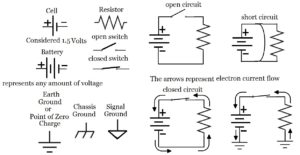
Electrical Current is represented by the letter “I” which stands for Intensity of current. Voltage is represented by the letter “E” for electromotive force. And, “R” standing for resistance. The relationship between these three quantities is known as Ohm’s Law. Using the equation below allows you to calculate any third value if the other two values are known.
